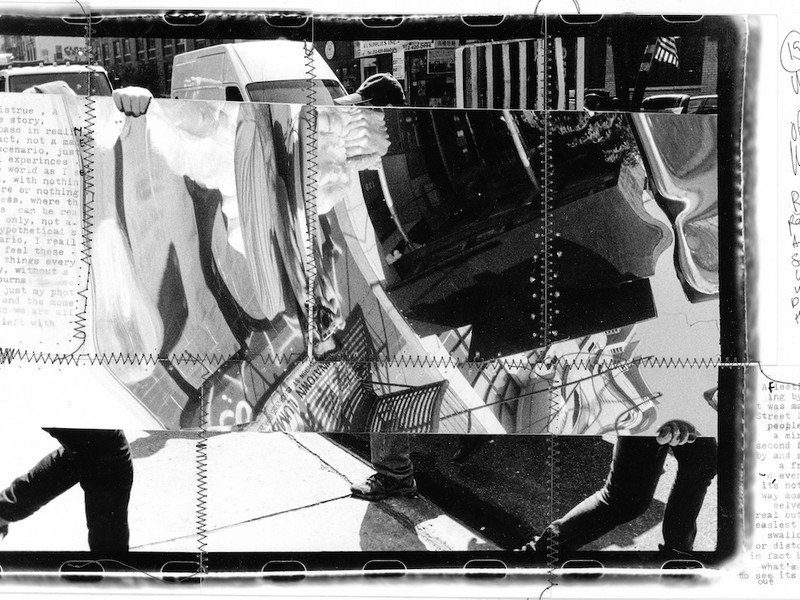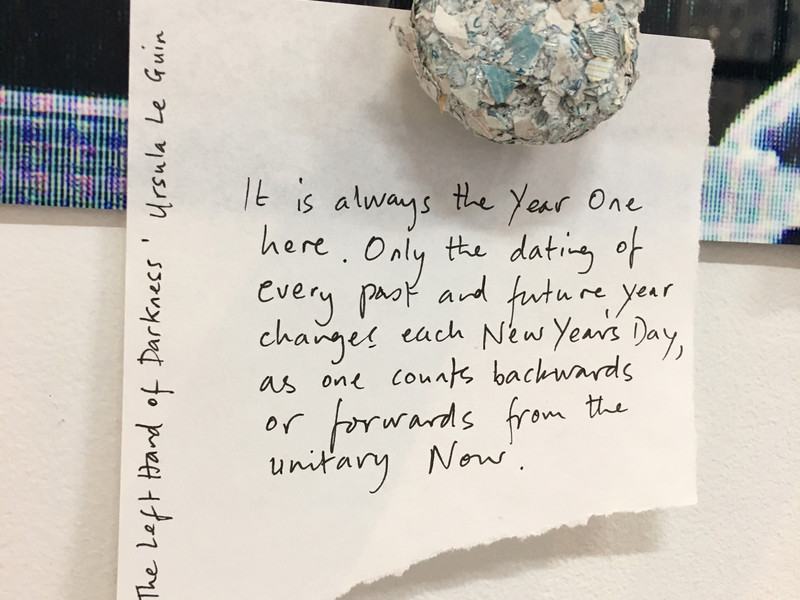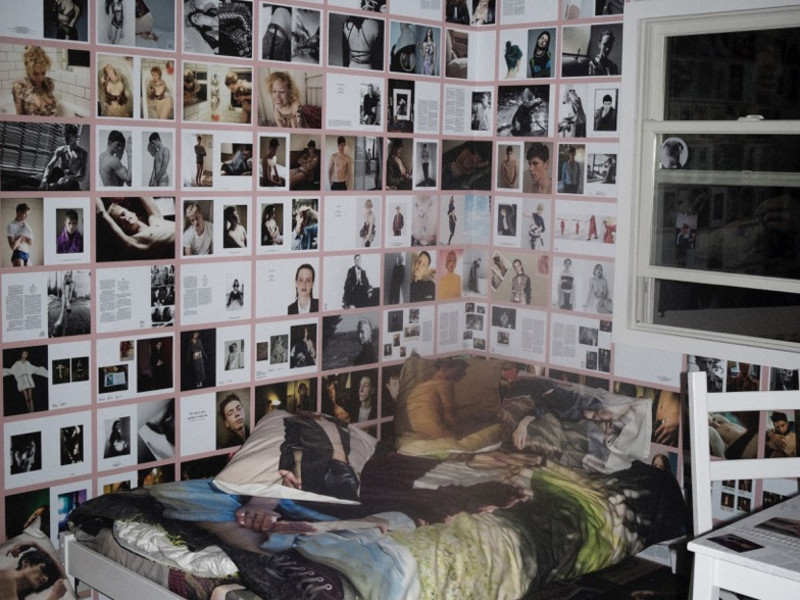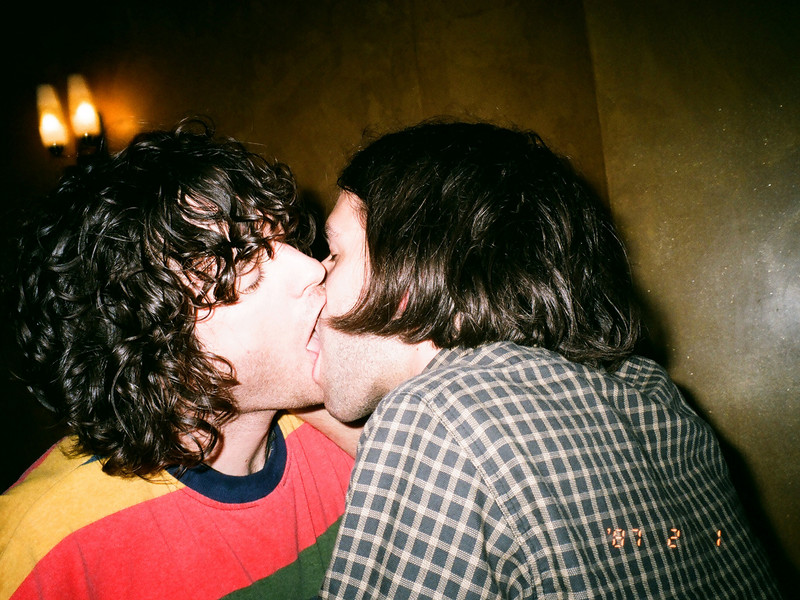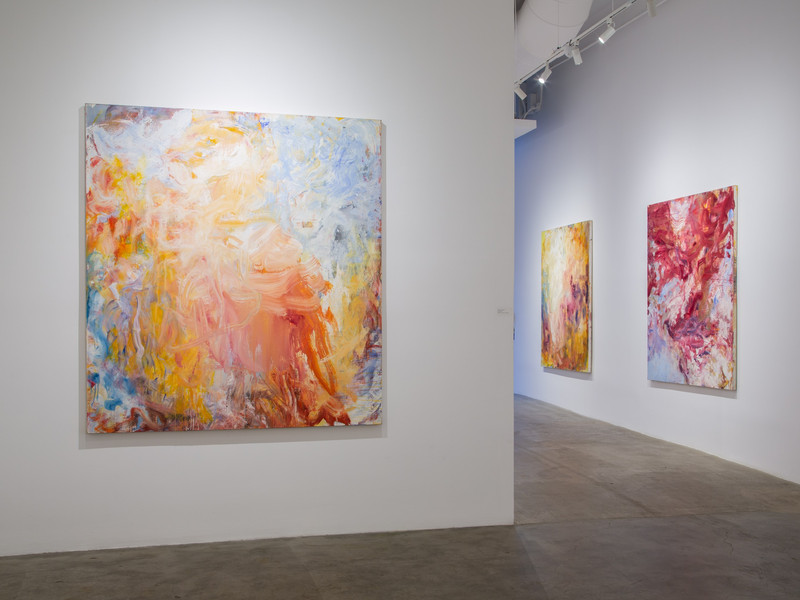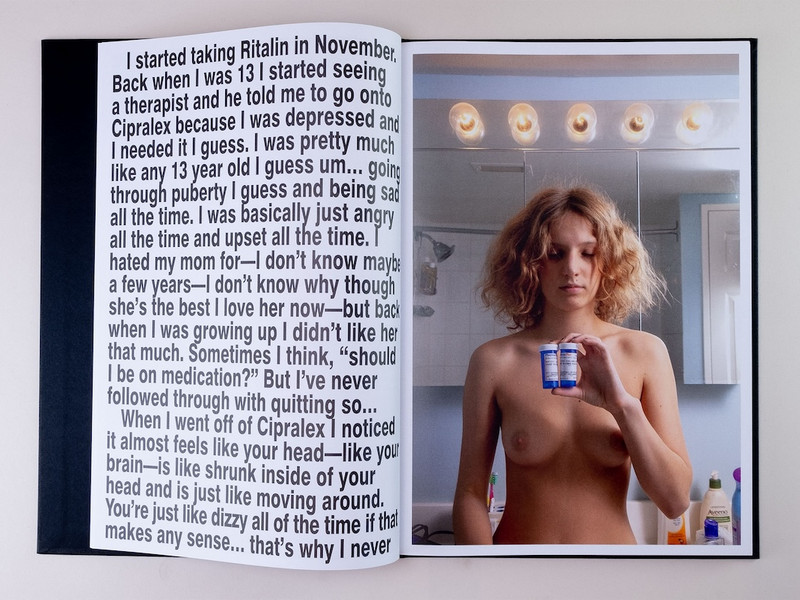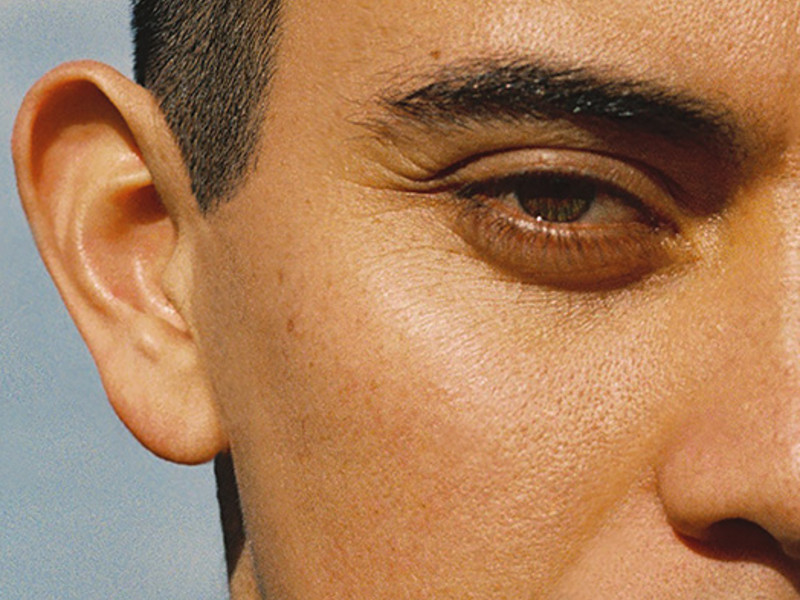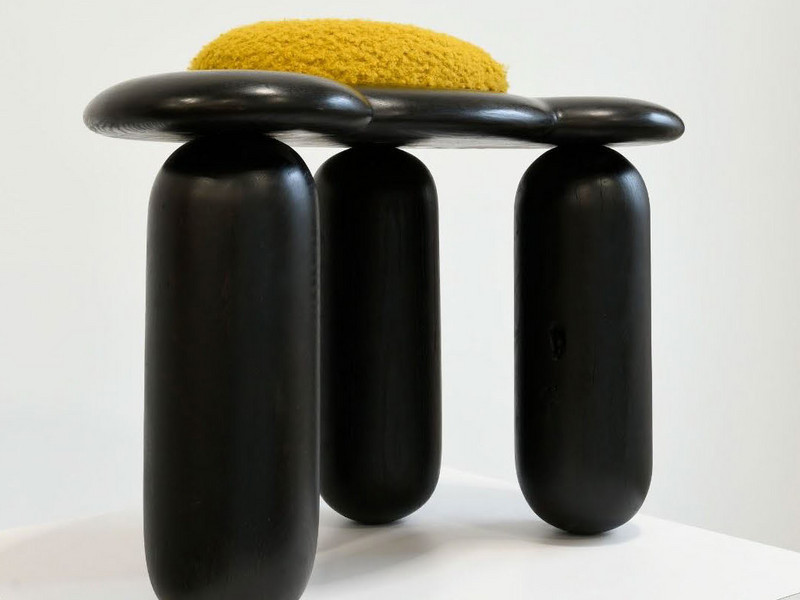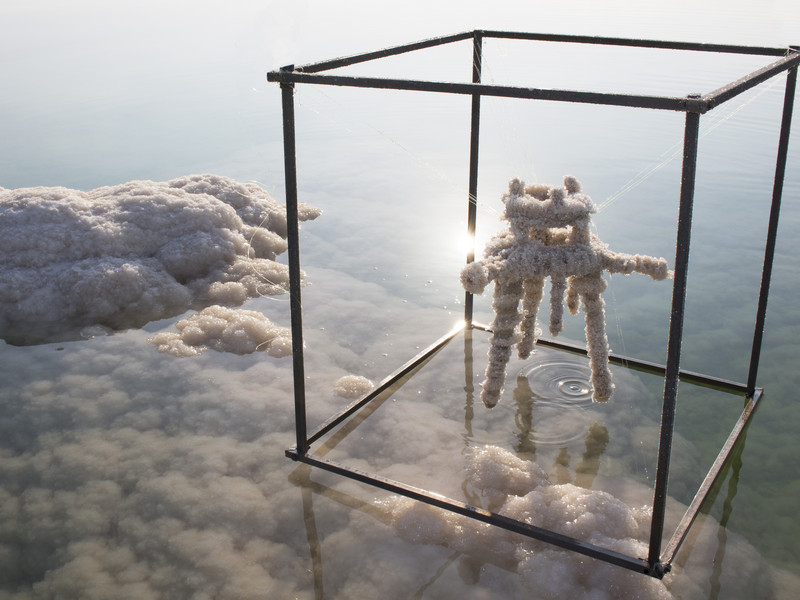Creature from the Black Lagoon

Can you tell me about the piece you did for The Chimney?
My exhibition is about the environment around The Chimney, especially the creek near the gallery. This creek is polluted—it’s the most polluted creek in the United States—and I was very interested in the subject. So, instead of bringing in some works from afar, I proposed to make a site-specific work for this exhibition concerned with the creek, which has been polluted since the 19th century because of the petrol refinery. So, this creek is very polluted by petrol, back to the Industrial Revolution. I work with materials like coal, and coal and petrol are the same family, sort of—they’re fossil fuels. So, I thought, 'Maybe I could work in the same idea through petrol this time.' So, what I’ve done, I’ve built a kind of Shinto shrine for all this negative history of this creek, and what's floating in it. It’s not to clean the creek with my work, but to purify the creek by the spirituality of this dark history.
It reminds me of something ancient.
Exactly, the title of the sculpture is 'Monolith.' I decided to make a monolith that suited this space—The Chimney has quite a high ceiling. Actually, this building was made as a petrol refinery. It’s an ancient power plant.
Do you always draw from things around the gallery?
I like to work site-specific, but not every time—it depends. Usually, I like to work on a conceptual level with the environment.
What drew you to this project?
I was interested in where this pollution was coming from, and what’s going on now, and what we’re going to do after. So, I made a shrine to this dark history, to here, to what’s going on, what happened in this creek, and I picked up a lot of garbage on the street around this creek to construct the Monolith—I picked up a lot of plastic garbage.
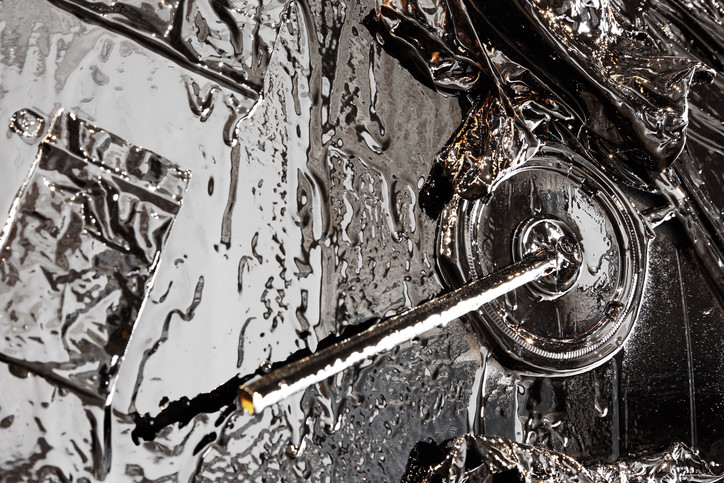
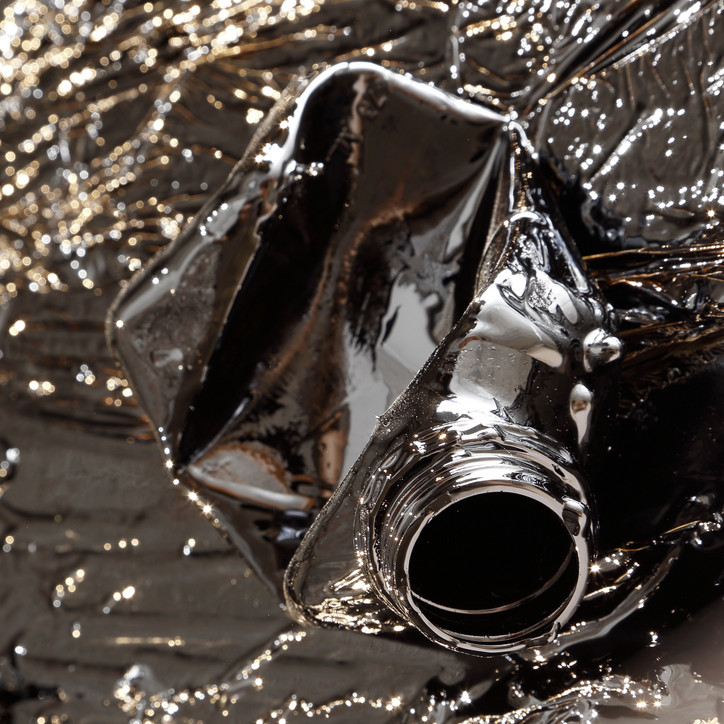
Is it a shrine to garbage? Is garbage the god of the shrine?
Yeah, kind of. There was a lot of plastic around the creek, so I picked up a calculator, bottles, even forks and knives, dental floss, very quotidian objects I found around the river—and I covered it with tar. It’s the same material as petrol—so everything in the sculpture is made by petrol.
Do you think these little plastic objects have a certain spirit to them?
While I was producing this Monolith, I didn’t think there was a spirituality to this sculpture, but after I made it, I made a fresco on the walls near the windows, and actually this fresco is connected to all the electric power, which illuminates the space. And these are all connected with one cable—it’s just like the shimenawa wire that hangs in a Shinto shrine in Japan. So, this electric cable surrounds the sculpture to charge the spirituality of the negative history.
So, the wire is connected to the lights?
Yes.
How is it similar to a Shinto shrine? I don’t know much about them.
I was inspired by Shinto shrines for this installation. The wire helps to divide the spirit world and the human world, and also it helps to charge or keep the energy in the space. In Japan, there’s a lot of huge trees that are roped by large wire or rope to keep the power in. Since Fukushima [nuclear disaster] in 2011, I think about how I use electricity and power in my work. So, this is a good example of how I treat electricity and power in my installation, because after Fukushima there was no electricity, and most Japanese power plants run on coal. So, fossil energy, and today we still use petrol to create electricity—even in New York, they use mostly petrol for electricity still.
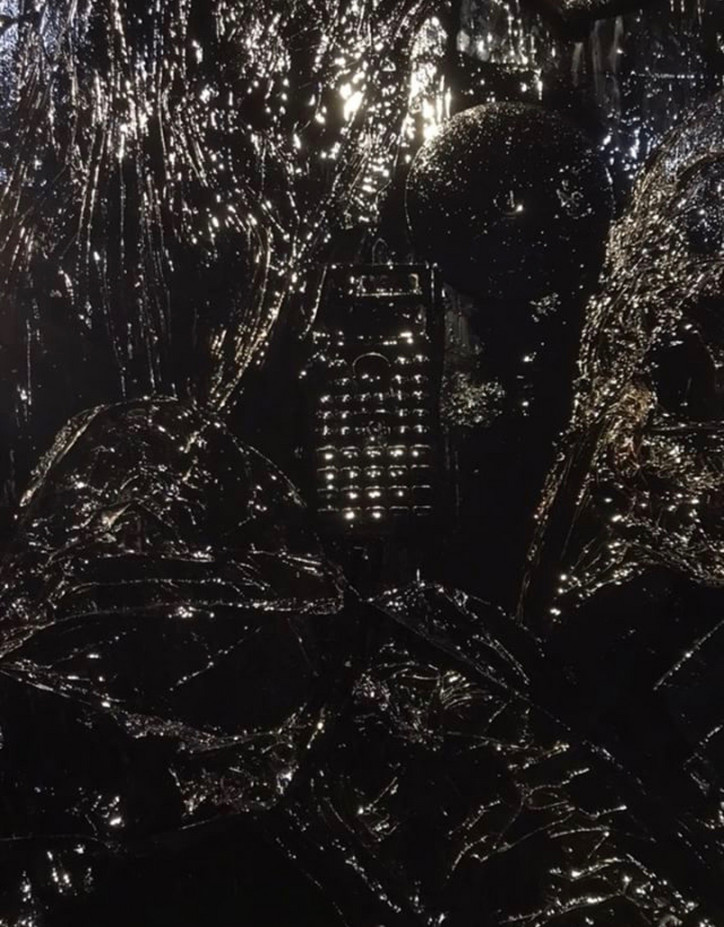
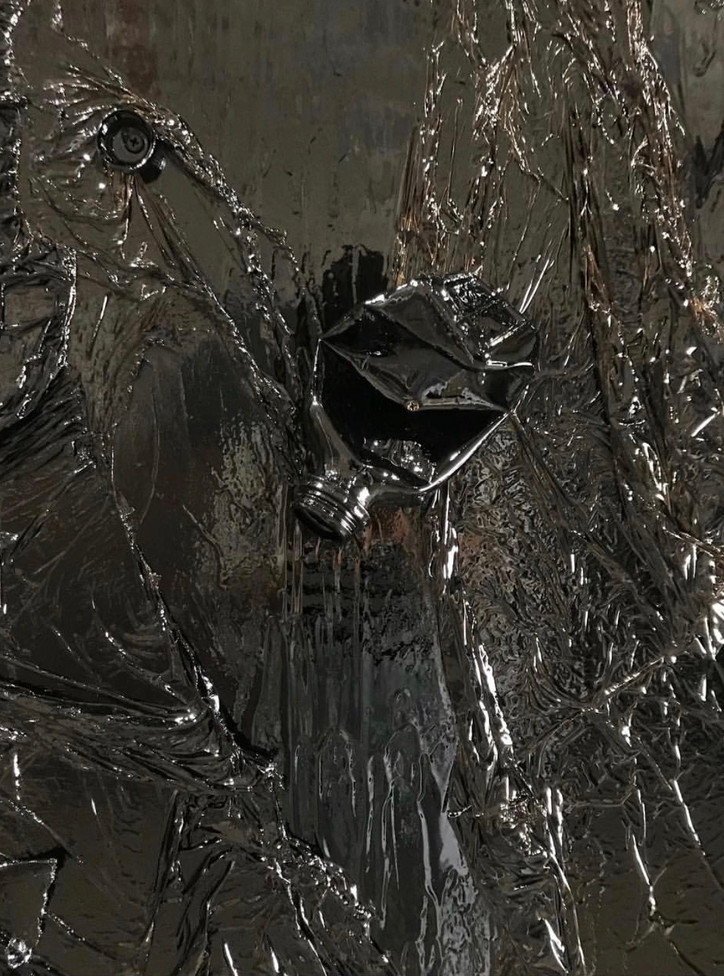
Have you ever considered using something radioactive in your work?
Not really, because I’m not interested in nuclear power, I’m more focused on fossil fuels. After Fukushima I didn’t know where our power was coming from. I realized it was so stupid to use nuclear power for electricity. We’re using nuclear power just to boil water, to turn on the lights—it’s such a simple thing to produce energy, why do we have to take so much risk just to produce energy when we can use solar or hydraulics?
I was very curious why we use coal and petrol, which produce so much CO2, but we use it because actually fossil fuels are made by ancient living things, like plants or animals, which are accumulated after they pass away. So, with this accumulation of energy, we remove it from the ground and then we burn it, so all the ancient powers are expanded today—that’s why we have so much energy in petrol or coal. But instead of energy we produce a lot of CO2, and the carbon from CO2 is a trace of these ancient living things. I think we release the CO2 as a kind of spirit energy. I don’t feel that it’s good to release the CO2—it’s just a question of should we release all this CO2 or let the fossils sleep in the ground? I tried to reveal the actuality of the situation, the real history.
It reminds me of diamonds, because that’s the next rung on the carbon ladder. Have you ever worked with diamond?
Not yet, because of financial problems, but I’ve worked with other carbon materials, like lead, carbon graphite. I like this exhibit because it really has to be experienced in person—there’s the smell of tar—you have to feel it with the five senses.
Is there sound?
I make a lot of sound works, actually. But sound was an important part of this exhibit, too, because I opened this huge gate—not enough to allow a human to pass through, but it’s an open gate to let the spirit enter the sculpture. Also, The Chimney is placed in front of a big avenue, so there are a lot of cars passing through. So, the sound of the cars is very important.
I love that little detail.
There’s lots of hidden details.
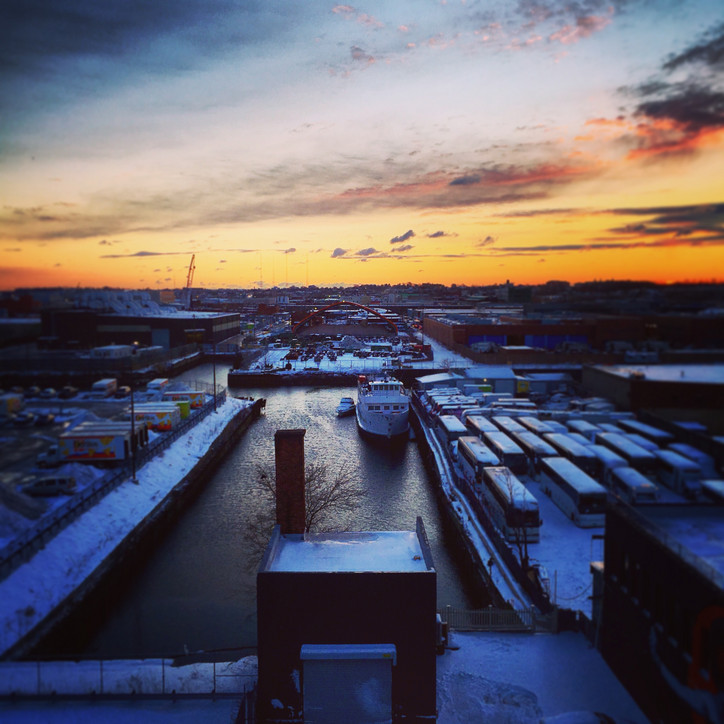
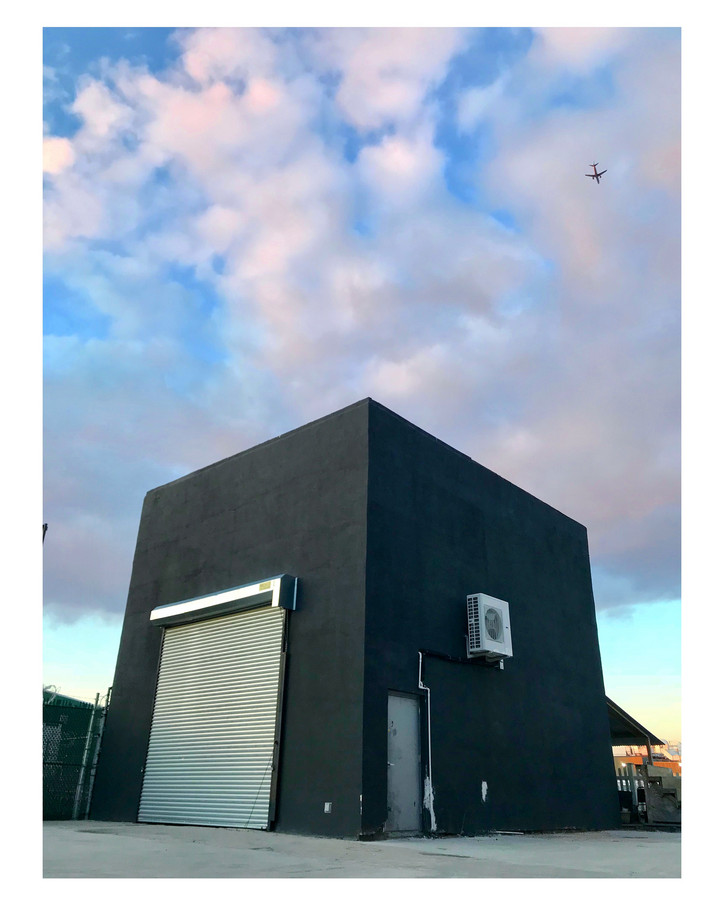
Above: The Chimney in Brooklyn; all photos courtesy of the gallery.
'Seek Hope, Who Enter Here,' will be on view every weekend through October 21, 2018.
'
